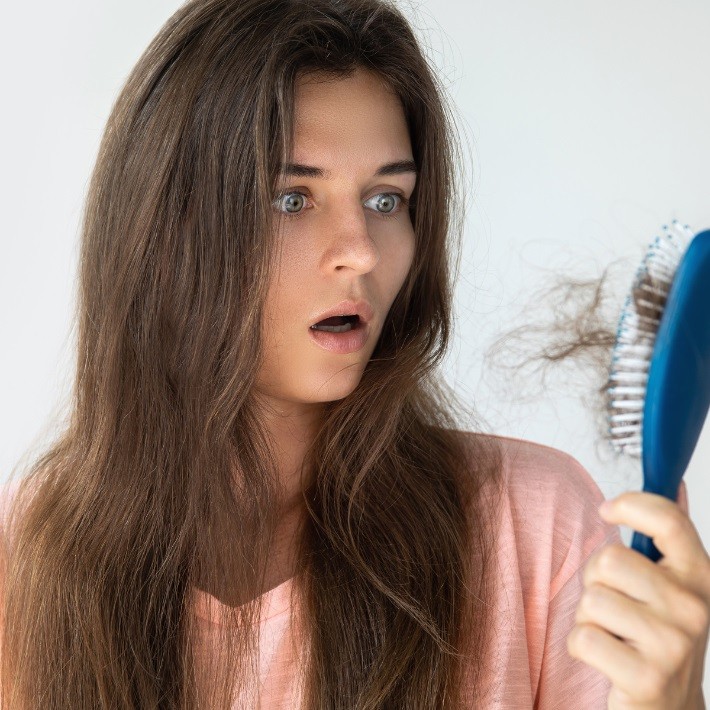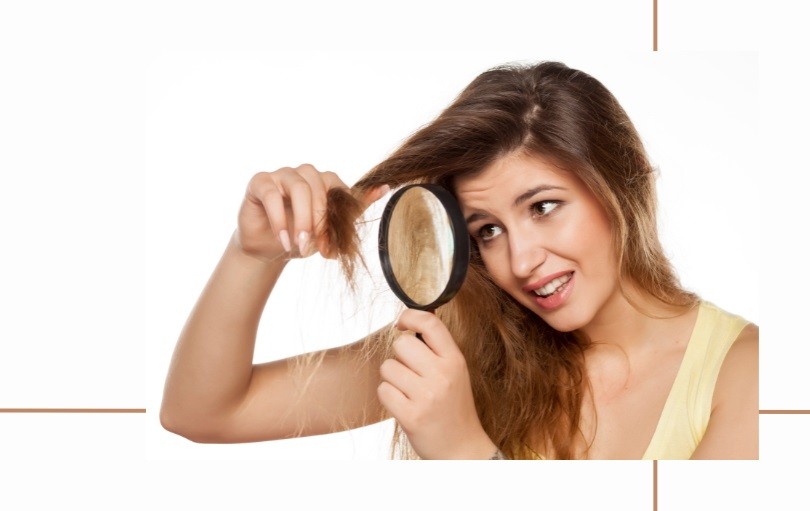Last Updated on March 28, 2025
Perms can cause hair loss. Hair perms, also known as permanent waves, are a popular styling technique that uses chemicals to permanently curl or straighten hair.
Frequent use of perms and other chemical treatments can lead to hair damage, including hair loss. Chemicals used in perms can weaken the hair shaft, causing hair to become brittle and break easily. This damage can also affect the hair follicles, leading to hair thinning and bald patches.
Additionally, overheating the hair during the perm process can cause more damage and increase the risk of hair loss. It is important to use caution when considering a perm and to speak with a professional stylist about any concerns regarding potential hair loss.
How Do Perms Work?

Perming involves chemically altering the structure of the hair to create curls or waves that last for a long time. Here is how the process works:
- The hair is wrapped in rods, and a chemical solution is applied to the hair.
- The chemical breaks down the hair’s natural disulfide bonds, which are responsible for the hair’s straightness or natural curls.
- After the hair bonds are broken down, the hair is reshaped to the desired style by wrapping it around the rod.
- A neutralizer is then applied to the hair to reform the disulfide bonds and lock in the new shape.
Related: Do Steroids Cause Hair Loss?
Explanation Of The Perm Process
Perming requires special attention to achieve excellent results. The perm process can be explained as follows:
- The process of perming involves breaking down natural disulfide bonds in the hair. The hair then takes a new shape by wrapping it around rods or rollers.
- Once the hair has been wrapped, a chemical solution is applied to the hair. The process is highly dependent on hair type and condition, and therefore, the right product must be used for the best results.
- After the chemicals have been set on the hair, a neutralizing agent is then applied to reform the bonds. Finally, the hair is rinsed, blow-dried and styled.
Different Types Of Perms And Their Effects On The Hair
There are several types of perms, and each has its unique method of producing curls and levels of damage to hair. Here are a few examples:
- Acid perms are gentle and work best for damaged or fine hair. They do not create tight curls.
- Alkaline perms are effective in creating tight, springy curls but can be very damaging to hair.
- Exothermic perms produce heat during the perming process, which makes the curling process faster. These are good for hair that does not hold curls.
- Digital perms are newer and require less heat, using electric rollers to create curls.
Chemicals Used In Perms And Their Impact On The Hair
Perming solutions contain chemicals such as ammonium thioglycolate, which can penetrate the hair and break it down. The chemicals can weaken the hair and cause damage, which can either be temporary or permanent. Here are some of the impacts of these chemicals:
- Overuse of perm solutions can lead to hair breakage and hair loss.
- Harsh chemicals in perm solutions can cause dryness, cause hair to become brittle, and lose shine.
- Strong-smelling chemicals used in perms can lead to allergies and other health concerns.
Perming is a complex process and requires the use of chemicals that can impact hair health. The results of a perm depend on the type of perm used, the hair type, and the stylist’s proficiency. Proper hair care can minimize potential damage, making perming a versatile styling option without severe hair loss.
Related: How Long Does Hair Dye Last?
Relation Between Perms And Hair Loss
Perms have been a popular hairstyle for decades, but they have been linked to hair loss. Some people blame the chemicals in the perm solution for damaging hair follicles and causing hair loss. We will examine the research linking perms with hair loss, discuss if perms can cause permanent damage to hair follicles, explore whether certain hair types are more susceptible to hair loss due to perms, and advise how often perms should be done to avoid long-term damage.
Examination Of The Research Linking Perms With Hair Loss
Studies have shown that there is a link between perms and hair loss. In one study, hair loss was reported in 5% of patients who received a perm, compared to only 2% of patients who did not receive a perm.
Another study found that hair loss was more common in people who received multiple perms over time. The chemicals in the perm solution can cause damage to the hair follicles, which may eventually lead to hair loss.
Can Perms Cause Permanent Damage To The Hair Follicles?
Perms can cause permanent damage to hair follicles if the perm solution is left on for too long or if the hair is over-processed. Over-processing can cause the hair to become weak and brittle, leading to breakage and hair loss.
It’s crucial to follow the instructions on the perm solution carefully and not leave it on for longer than recommended. Seeking the advice of a professional hairstylist is also recommended to avoid any unnecessary damage.
Are There Certain Hair Types More Susceptible To Hair Loss Due To Perms?
Yes, some hair types may be more susceptible to hair loss due to perms. People with fine, thin hair may be more vulnerable to damage caused by the chemicals in the perm solution. Hair that has been previously damaged or has undergone other chemical treatments, such as coloring or relaxing, may also be more susceptible to damage from perms.
It’s important to take into account your hair type and condition before opting for a perm.
How Often Should You Get A Perm To Avoid Long-Term Damage?
The frequency of perming can impact the long-term health of the hair. Experts recommend waiting at least six to eight weeks between perms to avoid any long-term damage to the hair follicles. It’s also important to consider the overall health of your hair before getting a perm.
If the hair is dry, brittle, or damaged, it’s best to wait until it has fully recovered before getting a perm. A professional hairstylist can advise on the best approach, taking into account the individual’s hair type and condition.
Perms can cause hair loss, and it’s essential to take precautions to avoid any long-term damage. If you’re considering a perm, do your research, consult with a professional hairstylist, and pay attention to your hair type and condition. By following these guidelines, you can enjoy a perm without compromising the long-term health of your hair.
Related: Things To Know Before Getting a Korean Perm
Frequently Asked Questions For Do Perms Cause Hair Loss?

Is Hair Loss A Common Side Effect Of Perming?
Yes, hair loss is a common side effect of perming. The chemicals used in the process can damage hair follicles.
How Long After A Perm Does Hair Loss Occur?
Hair loss can occur within a few days to weeks after getting a perm. It can take up to several months to regrow hair.
Can You Prevent Hair Loss When Perming?
Yes, you can prevent hair loss when perming by using a milder formulation, limiting the frequency of perming and conditioning your hair.
Does Perming Damage Thinning Hair?
Yes, perming can damage thinning hair and exacerbate hair loss. It is not recommended for people with thinning hair.
Can Perming Be Done Without Causing Hair Loss?
Yes, perming can be done without causing hair loss. It is important to choose a qualified stylist and use gentle products.
Conclusion
The debate on whether perms cause hair loss or not is ongoing. While there are no conclusive studies that establish a direct link between perming and hair loss, it is evident that excessive perming, the use of harsh chemicals, and improper maintenance can result in serious damage to the hair.
Advisable to seek professional guidance when getting a perm and to use high-quality products that are specifically formulated for permed hair. Furthermore, taking good care of your hair through frequent washing, conditioning, and moisturizing can help mitigate any negative effects of perming.
The key to maintaining healthy and beautiful hair is to strike a balance between the desired hairstyle and proper hair care. With this in mind, you can enjoy a chic and stylish look with a perm without risking hair loss or damage.

